This article explains how to enable or disable enhanced audio in Windows 11.
With enhanced audio enabled, users may enjoy the sound quality of their computer’s speakers when listening to music or watching movies.
This Windows 11 feature brings audio quality to laptops and computers, allowing users to experience the same audio quality typically associated with home theater stereo sound systems.
Other enhancement options include Bass boost, Virtual surround, and Loudness equalization. The Loudness equalization prevents one content from playing louder than the others. Similar to watching TV, a loud commercial starts playing. This should prevent that.
By default, this feature is not enabled in Windows 11. However, if you need to try and see if it works, continue below to learn how to enable it. If it doesn’t work, disable it.
How to enable enhanced audio in Windows 11
Go to the Settings pane to enable enhanced audio in Windows 11.
Windows 11 has a centralized location for the majority of its settings. Everything can be done, from system configurations to creating new users and updating Windows from its System Settings pane.
To get to System Settings, you can use the Windows key + I shortcut or click on Start ==> Settings, as shown in the image below:

Alternatively, you can use the search box on the taskbar to search for Settings. Then select to open it.
In Windows Settings, click System, and select Sound on the right pane of your screen, as shown in the image below.
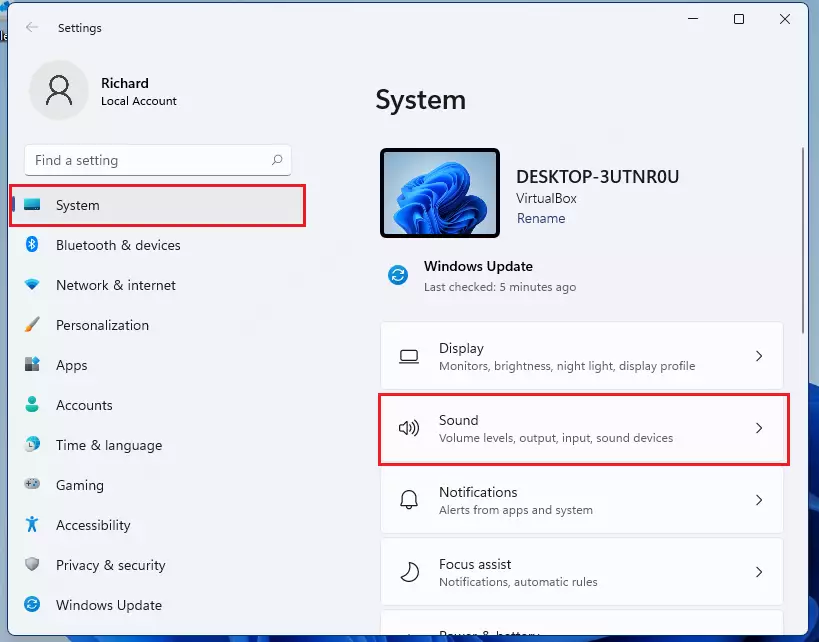
On the Sound settings pane, under Advanced, click on All sound devices, as highlighted below.
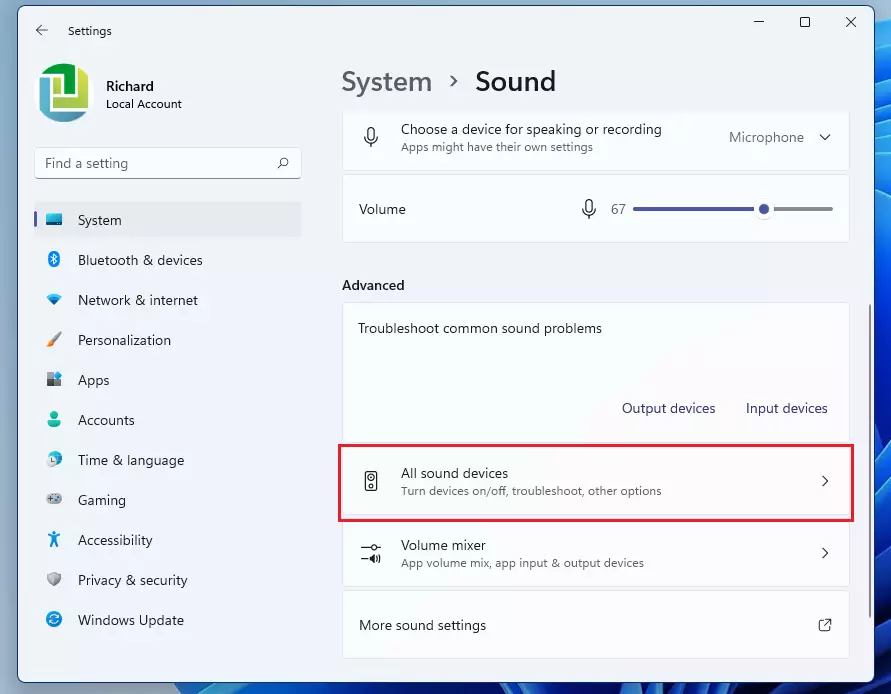
Under All sound devices, select Speakers.

Toggle the button to the On position to enable Enhanced audio as highlighted below.
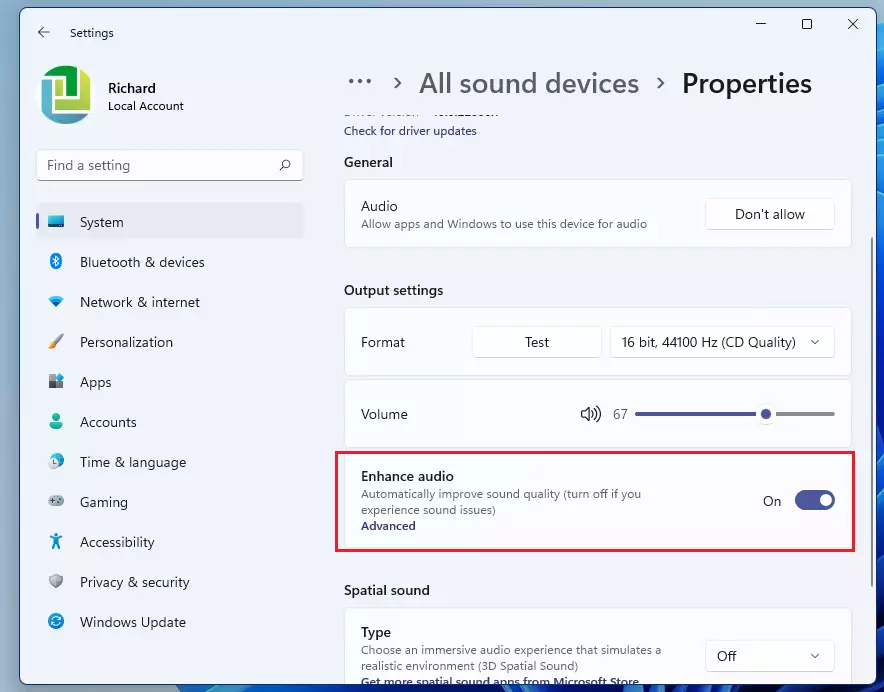
Under Enhanced Audio, select Advanced to enable additional features.
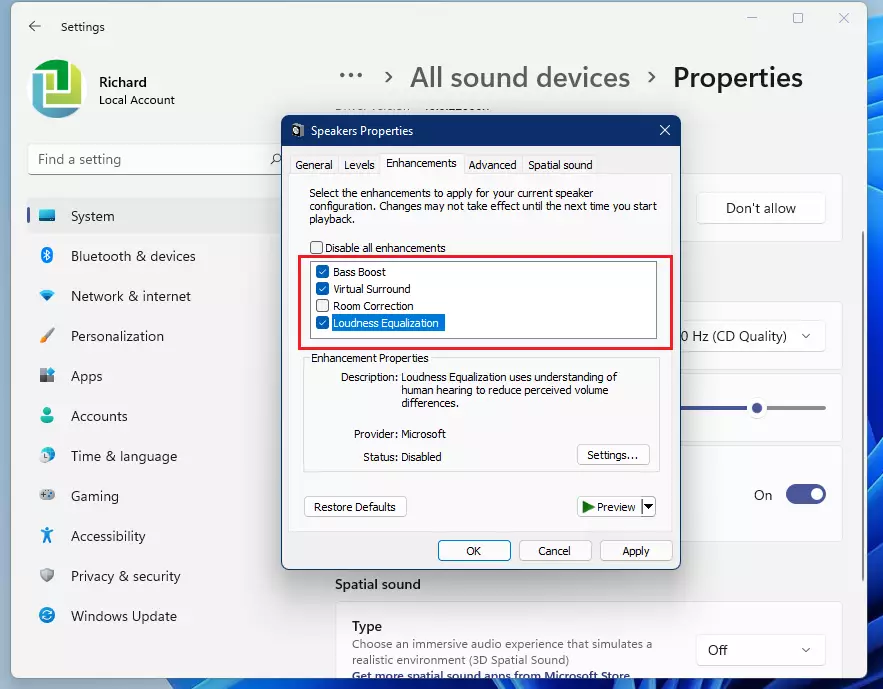
- Bass Boost: Boosts the lowest frequencies that the speakers can play.
- Virtual Surround: Encodes surround audio for transfer as stereo output to receivers with a Matrix decoder.
- Room Correction: Compensates for room and speaker characteristics.
- Loudness Equalization: Uses an understanding of human hearing to reduce perceived volume differences.
Once all the settings are enabled, apply, exit, and test the system audio.
How to disable enhanced audio in Windows 11
If all the settings above didn’t add any improvements, you can simply turn it off. To do that, reverse the steps above by going to the Start menu ==> Settings ==> Sound ==> All sound devices ==> Speakers and toggle the button for Enhanced audio to the Off position.
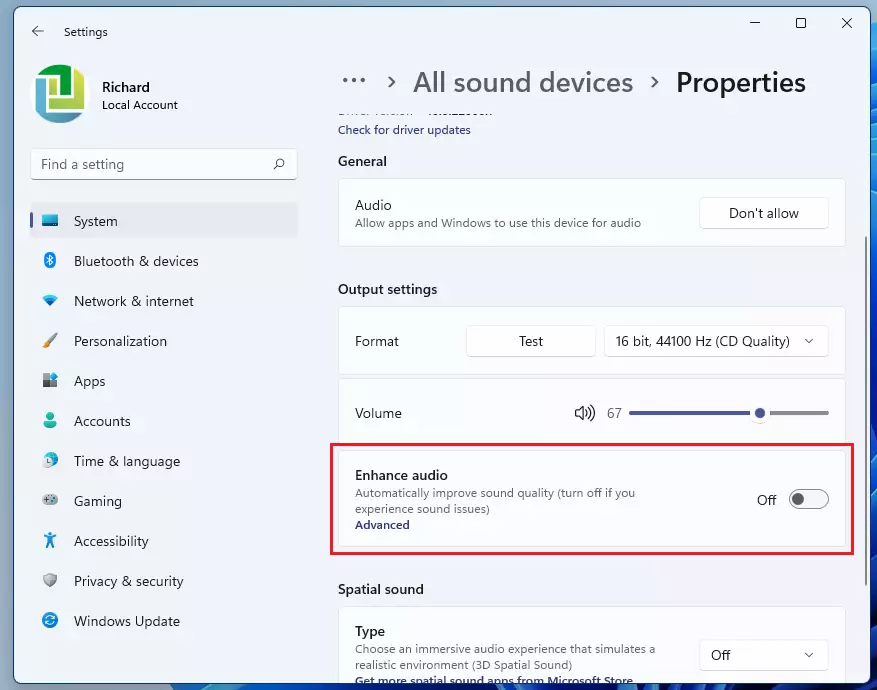
That should do it!
Conclusion:
- Enhanced audio in Windows 11 can significantly improve your listening experience, especially for music and movies.
- Users can easily enable or disable the feature based on their preferences through the System Settings.
- Key features like Bass Boost, Virtual Surround, and Loudness Equalization enhance audio quality and minimize volume disparities.
- If you encounter issues or don’t notice improvement, simply toggle the feature off using the same steps.
- Experiment with the settings to find the best audio configuration that suits your needs.

Leave a Reply